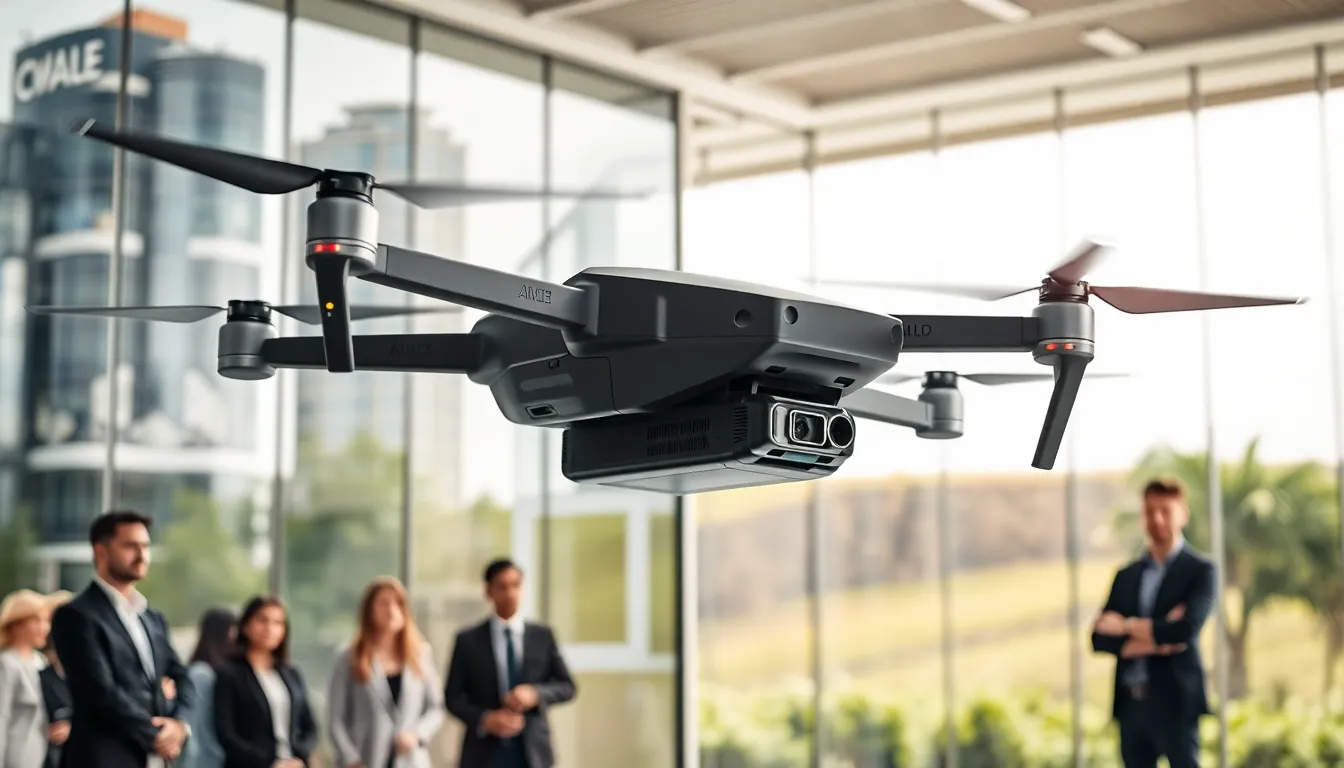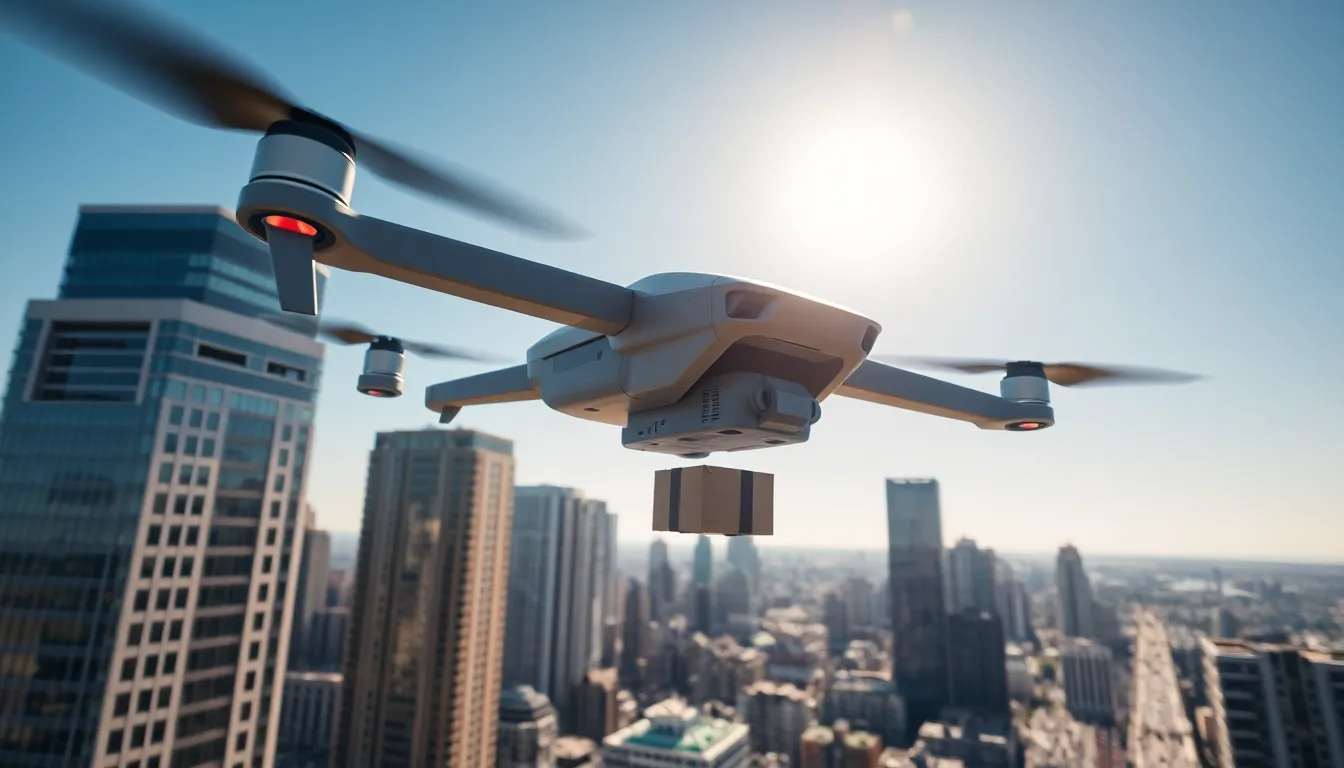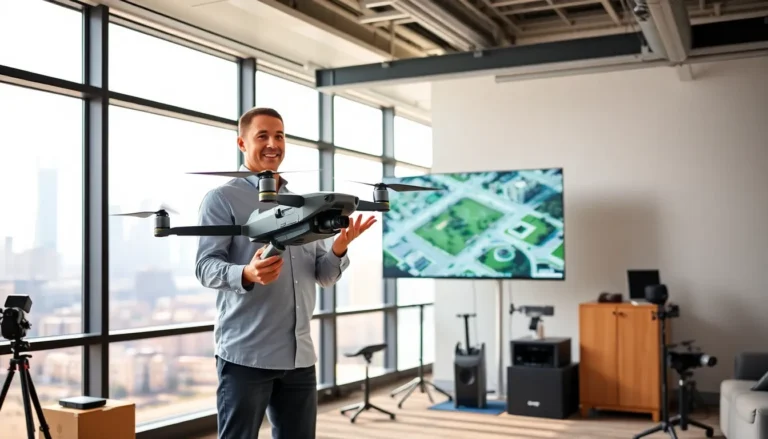Imagine ordering pizza and having it delivered by a flying robot. Sounds a bit like science fiction, right? Yet, payload drones are turning that dream into a reality. These innovative flying machines are not just for cool video footage: they are redefining how businesses think about delivery and logistics. From reducing traffic congestion to speeding up deliveries, the rise of payload drones is a game changer. Buckle up as we jump into the world of payload drones and explore how they are reshaping modern logistics.
Table of Contents
ToggleUnderstanding Payload Drones

Payload drones, as the name suggests, are aerial vehicles specifically designed to carry cargo, be it medical supplies, food deliveries, or even retail products. These drones can vary in size, load capacity, and functionalities, all tailored to meet specific operational needs. But what sets them apart from regular drones? Well, most drones are primarily built for recreational or photographic purposes, while payload drones are engineered for precision logistics.
They employ advanced navigation systems, and some even use AI to improve their efficiency and accuracy. Their ability to autonomously navigate complex environments makes them invaluable in scenarios where ground transport might not be feasible due to traffic or location constraints. Whether flying over urban jungles or remote rural landscapes, payload drones are adept at ensuring that critical items reach their destinations swiftly and safely.
Types of Payload Drones
Payload drones come in various shapes and sizes, each designed for specific purposes. Here’s a rundown of the most prevalent types:
Fixed-Wing Drones
These drones are akin to mini airplanes. They are ideal for covering long distances and can carry heavier loads. Businesses like agriculture and surveying often use them for delivering seeds or aerial mapping.
Rotary-Wing Drones
Helicopter-like in nature, rotary-wing drones can hover, making them excellent for precision deliveries. They are often used in urban environments to transport crucial supplies like medical gear to emergency scenes.
Hybrid Drones
Combining the best features of fixed-wing and rotary-wing drones, hybrid models can switch between flying styles. This versatility allows for more efficient deliveries in varied environments.
Applications of Payload Drones
There’s no denying that payload drones are rapidly gaining traction across various sectors. Here are some notable applications:
Medical Deliveries
In remote areas, access to medical supplies can be a challenge. Drones can transport blood, vaccines, and other critical health-related materials, saving lives in emergencies. Some healthcare organizations have already seen remarkable success with drone deliveries.
E-commerce
With the rise of online shopping, businesses are exploring drones as a faster delivery method. Imagine getting your orders delivered within minutes instead of days. Companies like Amazon are already investing in drone technology to innovate their logistics.
Disaster Relief
In disaster-stricken areas, payload drones can provide immediate support by delivering food, water, and supplies to those cut off from traditional supply routes. Their ability to bypass blocked roads underlines their life-saving capabilities.
Challenges in Payload Drone Implementation
Even though their potential, payload drones aren’t free from challenges. Here are a few obstacles that stand in the way:
Regulatory Hurdles
The legality of drone usage varies by location. Governments worldwide are still establishing regulations governing drone flights, especially concerning airspace management and safety measures.
Technical Limitations
Payload drones require sophisticated technology, and creating reliable systems can be costly and complex. Issues like battery life, payload capacity, and weather dependability can hinder their effectiveness.
Public Perception
Many individuals still view drones warily, raising concerns about privacy and noise pollution. For widespread adoption, companies will need to address these perceptions and highlight safety benefits.
The Future of Payload Drones
As technology evolves, so does the potential of payload drones. Experts predict several trends that could significantly impact their future:
Increased Autonomy
With advancements in AI and machine learning, future drones are likely to operate with even greater autonomy. They might navigate complex terrains without human intervention, enhancing efficiency and safety.
Expanded Use Cases
From agriculture to delivery services, expect to see payload drones exploring new applications. Innovations in design and payload capacity might make them suitable for even heavier items in the near future.
Smart Integration
Drones could soon be integrated into smart cities, working alongside other technologies to optimize delivery routes and improve services. This synergy might not only streamline logistics but also reduce congestion on the ground.





